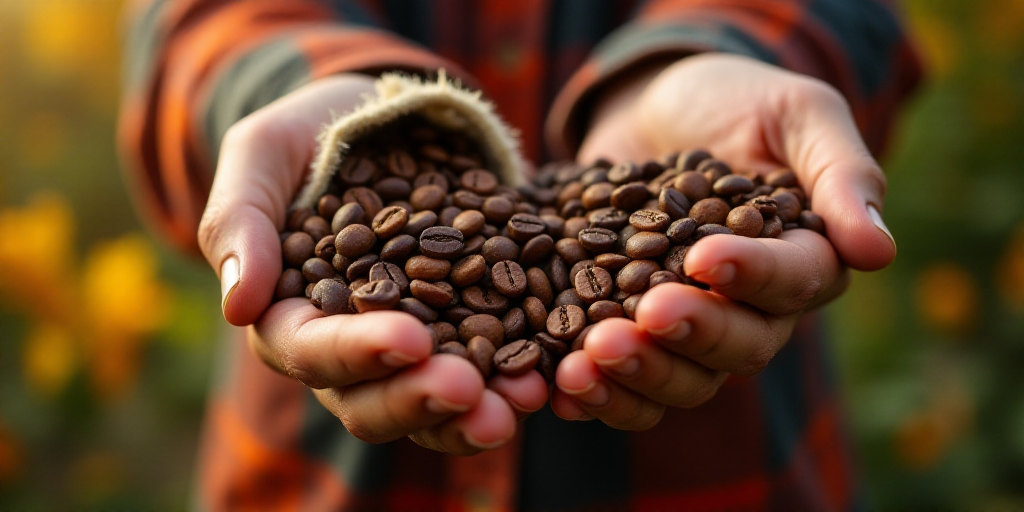Background on Mexican Coffee Industry and Relevance
Mexico is one of the world’s leading coffee producers, known for its high-quality Arabica beans. The country’s coffee industry plays a significant role in its economy, providing jobs and contributing to export revenues. The United States is the primary destination for Mexican coffee exports, which include green, roasted, and soluble formats.
Export Projections for 2025-2026
According to the United States Department of Agriculture (USDA), Mexican coffee exports are projected to grow for the third consecutive year in the 2025-2026 cycle, reaching 3.05 million tons equivalent of green coffee beans.
This volume represents a 4.3% year-over-year increase and nearly a full recovery from the 2021 level of 3.09 million tons, which subsequently dropped to 2.6 million tons.
The tonnage equivalent of green coffee beans is a standard unit used in the industry to compare different forms of coffee (such as roasted, ground, or instant) by converting them to the equivalent weight they would have if they were green coffee beans, before roasting.
Drivers of Export Growth
The USDA attributes the continued growth in Mexican coffee exports to the persistent rise in soluble coffee exports, projected to reach 1.6 million tons equivalent.
Green, roasted, and soluble coffee formats are all part of Mexican coffee exports to the United States.
Green coffee exports occur from January to September, with the largest volumes typically shipped in April and May. This pattern has remained consistent over the past decade.
Import Forecasts for 2025-2026
For the 2025-2026 marketing year, coffee imports are projected at 2.39 million tons equivalent, the same level as the previous marketing year. An increase in Robusta imports and a decrease in soluble coffee imports are expected, driven by the growth of the domestic coffee industry.
Production Projections for 2025/26
The USDA anticipates Mexico’s coffee production will reach 3.9 million equivalent tons of green beans in the 2025/26 marketing year.
This slight 0.9% increase compared to the previous year is attributed to favorable coffee prices and ongoing efforts to improve coffee varieties, encouraging planting.
Regional efforts are underway to enhance plant health and revitalize aging plantations in Chiapas, Veracruz, and Puebla. High international coffee prices are expected to benefit producers across all regions.
With increased income, producers can invest in better agricultural practices such as removing excess berries from trees and surrounding soil to reduce pest and disease risks, as well as weed control to minimize resource competition.
Domestic Consumption Projections for 2025/26
Mexican coffee consumption for the 2025/26 marketing year is expected to grow modestly by 1.6% compared to the previous year, reaching 3.15 million tons equivalent.
This growth is primarily driven by roasted coffee. This consistent growth is supported by factors such as increasing urbanization, the expansion of cafes, and growing interest in specialty and premium coffee.
For the 2024/25 marketing year, consumption remains stable at 3.1 million tons. Soluble coffee continues to dominate the Mexican market, representing 57% of total domestic consumption. Ground coffee accounts for the remaining 43%.
Key Questions and Answers
- What is driving the growth in Mexican coffee exports? The primary driver is the continuous rise in soluble coffee exports, projected to reach 1.6 million tons equivalent.
- What formats of coffee are included in Mexican exports to the US? Green, roasted, and soluble coffee formats are all part of Mexican coffee exports to the United States.
- What are the projected import and production numbers for Mexico in the 2025-2026 marketing year? Coffee imports are projected at 2.39 million tons equivalent, while production is expected to reach 3.9 million equivalent tons of green beans.
- How will increased coffee prices impact Mexican producers? High international coffee prices are expected to benefit producers across all regions, allowing them to invest in better agricultural practices.
- What factors are contributing to the growth in Mexican coffee consumption? Factors include increasing urbanization, cafe expansion, and growing interest in specialty and premium coffee.






